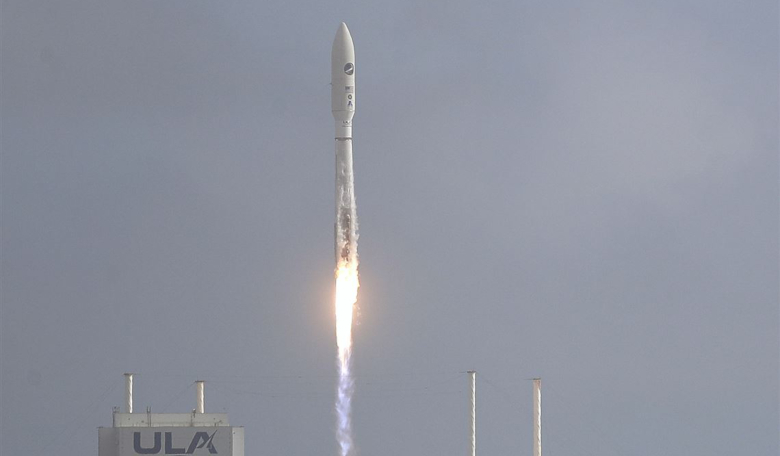The unpiloted US Air Force X-37B spaceplane is back in orbit after a successful launch aboard a United Launch Alliance Atlas V rocket Sunday morning.
The vehicle lifted off at 09:14 AM Eastern time from Space Launch Complex-41 at Cape Canaveral Air Force Station in Florida and the first stage appeared to perform flawlessly as it lofted the vehicle in to the atmosphere.
This is the sixth flight of an X-37B, an autonomous reusable space plane that is flown without a crew; the previous mission spent 780 days in orbit, 240 days longer than expected and was shrouded in mystery from start to finish.
This time around, the US military have released more details on the flight stating mission objectives are not as sensitive as past launches.
Packed onboard are five experimental payloads including a US Naval Research Laboratory experiment that will test the use of microwave beams to send solar power to Earth from space and the US Air Force Academy’s FalconSAT-8 satellite.
In addition are two NASA experiments that will study the effects of radiation on seeds and materials used to grow food in space.
However, the specifics pertaining to the mission are still classified and ULA were only allowed to show the first seven minutes of the flight in its live webcast.
“The details of the vehicle, the mission it will do on orbit, and where it will go, all that is classified,” ULA’s CEO Tory Bruno told reporters. “We have to stop the live broadcast early so we don’t provide adversaries too much data about the flight.”
The secretive Boeing-made X-37B looks like a miniature space shuttle and echoes this design by taking off vertically and landing horizontally on a runway. However unlike NASA’s space shuttle, the X-37B is solar-powered allowing it to remain in orbit for considerably long periods of time.
“We’ve learned a lot from the X-37,” Chief of Space Operations Gen. John Raymond told a small group of reporters ahead of the launch. “One of the things that we’ve learned is the value of reusability, and I think as a Space Force there’s a couple things that we’re really going to value and reusability is one of those and autonomy is another one.”
In its five flights the X-37B has spent 2,865 days on orbit and logged a cumulative 7.9 years in space covering more than a billion miles.
The planned duration of the current mission is not known.
If you've enjoyed reading this article, please consider subscribing to ROOM Space Journal to gain immediate and full access to the latest magazine feature articles and receive your own print and/or digital copies of ROOM magazine delivered direct to your door or electronically.











